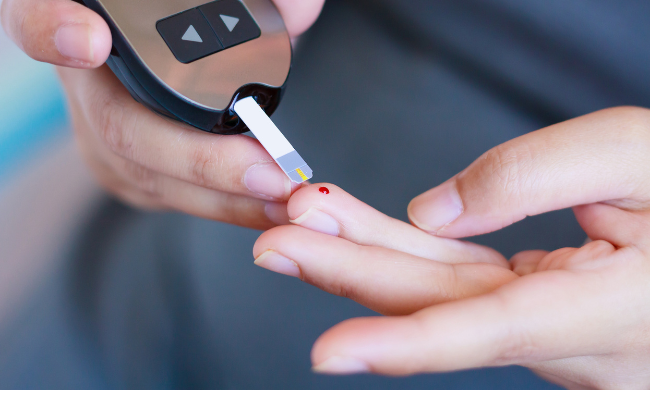How to Treat Diabetic Ketoacidosis And Hyperosmolar Nonketotic Diabetic Coma?
- January 03, 2024
- No Comments

What are Diabetic Ketoacidosis and Hyperosmolar Nonketotic Diabetic Coma?
Diabetic Ketoacidosis (DKA) and Hyperosmolar Nonketotic Diabetic Coma (HONK) are critical complications of diabetes mellitus, marked by severe imbalances in blood glucose levels. Both conditions, sharing hypoinsulinemia, represent a continuum of diabetic emergencies. DKA indicates total insulin absence, while hyperosmolar coma without DKA suggests lesser insulin deficiency. Recognizing this continuum is vital for accurate diagnosis and tailored intervention. Misdiagnosis or undertreatment carries a high mortality risk. Early identification, swift medical intervention, and understanding the underlying insulin deficiency are crucial in managing these potentially life-threatening complications. In summary, DKA and HONK underscore the importance of insulin in diabetes management, emphasizing the nuanced nature of diabetic emergencies and the varied presentations of insulin deficiency.
Why do DKA and HONK occur?
Diabetic Ketoacidosis typically arises in individuals with type 1 diabetes, although it can occur in those with type 2 diabetes as well. The condition develops when the body is unable to produce enough insulin, causing a buildup of ketones in the blood. Ketones are acidic substances produced when the body breaks down fat for energy in the absence of sufficient insulin. On the other hand, Hyperosmolar Nonketotic Diabetic Coma is more commonly associated with type 2 diabetes. It occurs when the blood glucose levels become extremely high, leading to severe dehydration. Unlike DKA, HONK does not typically involve the accumulation of ketones in the blood.
How do DKA and HONK manifest?
The symptoms of Diabetic Ketoacidosis and Hyperosmolar Nonketotic Diabetic Coma can be severe and should not be ignored. Common signs include excessive thirst, frequent urination, nausea, vomiting, abdominal pain, confusion, and lethargy. If left untreated, these conditions can progress rapidly, leading to unconsciousness and, in extreme cases, death.
Treatment Solutions for DKA and HONK
- Immediate Medical Attention: DKA and HONK are medical emergencies that require prompt intervention. If you suspect someone is experiencing these complications, seek immediate medical attention.
- Fluid Replacement: Dehydration is a common feature of both DKA and HONK. Intravenous fluids are administered to restore lost fluids and electrolytes. This helps to correct dehydration and improve overall circulation.
- Insulin Therapy: Insulin is crucial for managing both conditions. In DKA, insulin helps to reduce blood ketone levels by facilitating the uptake of glucose by cells. In HONK, insulin is essential for lowering excessively high blood glucose levels.
- Electrolyte Replacement: Imbalances in electrolytes, such as potassium, sodium, and chloride, are common in DKA and HONK. Adequate electrolyte replacement is vital for maintaining proper cellular function and preventing complications.
- Monitoring Blood Glucose Levels: Regular monitoring of blood glucose levels is essential in managing diabetes and preventing complications. In the case of DKA and HONK, continuous monitoring helps healthcare professionals make timely adjustments to insulin therapy and fluid replacement.
- Identifying and Treating Underlying Causes: Understanding and addressing the underlying causes of DKA and HONK is crucial. This may involve identifying infections, discontinuing medications that contribute to the condition, and addressing other factors that may exacerbate diabetes complications.
Benefits of Timely Treatment
- Prevention of Complications: Timely intervention significantly reduces the risk of complications associated with DKA and HONK. Complications may include organ failure, cerebral edema, and long-term damage to various body systems.
- Improved Patient Outcomes: Prompt treatment improves overall patient outcomes, minimizing the severity and duration of symptoms. It also reduces the likelihood of long-term complications related to uncontrolled diabetes.
- Reduced Healthcare Costs: Early treatment can lead to shorter hospital stays and fewer medical interventions, ultimately reducing healthcare costs. Prevention of severe complications also decreases the economic burden on both individuals and healthcare systems.
- Enhanced Quality of Life: Managing and treating DKA and HONK effectively contribute to an improved quality of life for individuals with diabetes. It allows them to maintain better control over their condition, reducing the impact on daily activities and overall well-being.
- Education and Prevention: Addressing DKA and HONK provides an opportunity for healthcare professionals to educate individuals with diabetes about the importance of regular monitoring, insulin therapy, and lifestyle modifications. This knowledge is crucial for preventing future occurrences of these complications.
Comments (0)